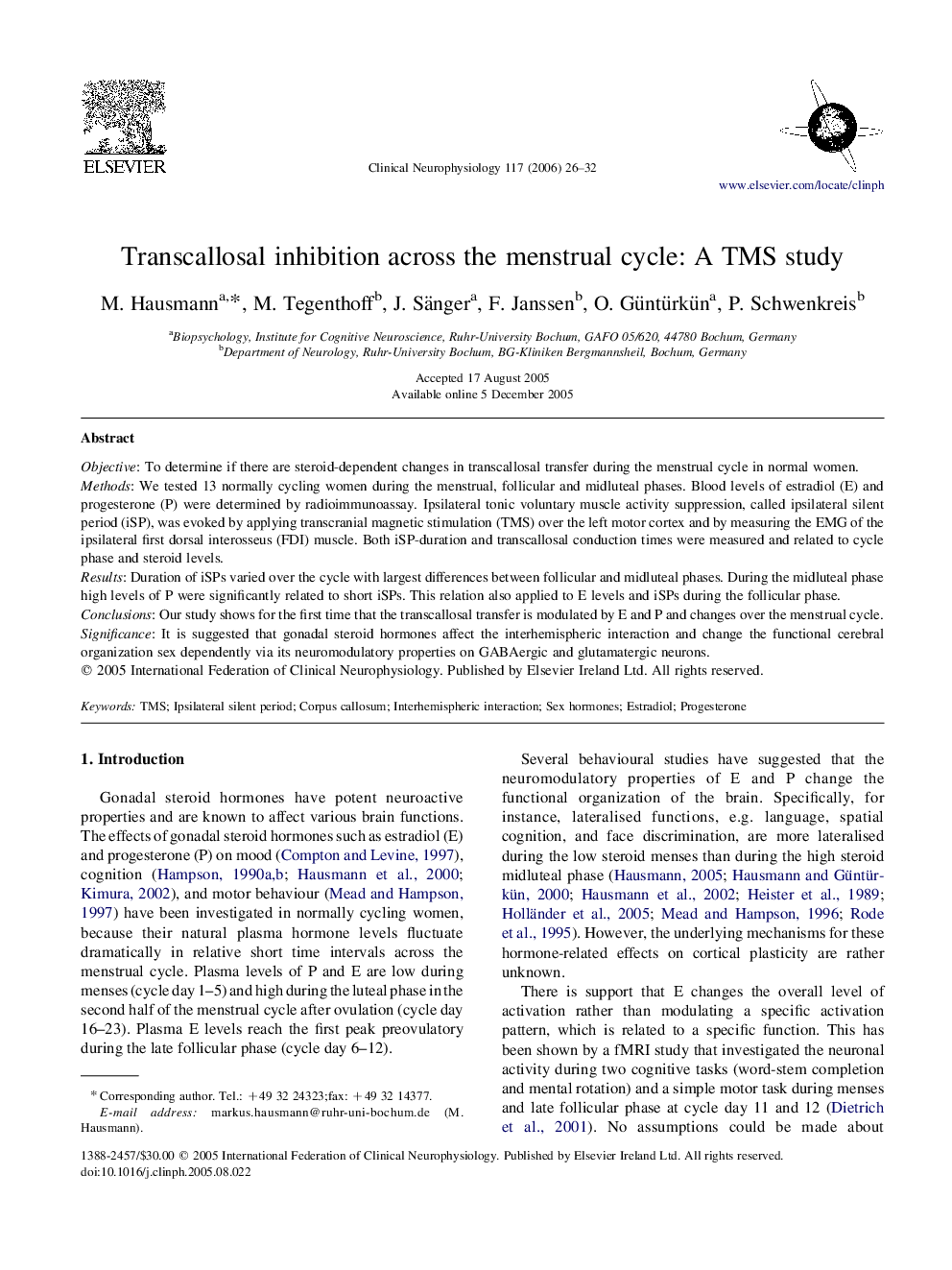| Article ID | Journal | Published Year | Pages | File Type |
|---|---|---|---|---|
| 3048064 | Clinical Neurophysiology | 2006 | 7 Pages |
ObjectiveTo determine if there are steroid-dependent changes in transcallosal transfer during the menstrual cycle in normal women.MethodsWe tested 13 normally cycling women during the menstrual, follicular and midluteal phases. Blood levels of estradiol (E) and progesterone (P) were determined by radioimmunoassay. Ipsilateral tonic voluntary muscle activity suppression, called ipsilateral silent period (iSP), was evoked by applying transcranial magnetic stimulation (TMS) over the left motor cortex and by measuring the EMG of the ipsilateral first dorsal interosseus (FDI) muscle. Both iSP-duration and transcallosal conduction times were measured and related to cycle phase and steroid levels.ResultsDuration of iSPs varied over the cycle with largest differences between follicular and midluteal phases. During the midluteal phase high levels of P were significantly related to short iSPs. This relation also applied to E levels and iSPs during the follicular phase.ConclusionsOur study shows for the first time that the transcallosal transfer is modulated by E and P and changes over the menstrual cycle.SignificanceIt is suggested that gonadal steroid hormones affect the interhemispheric interaction and change the functional cerebral organization sex dependently via its neuromodulatory properties on GABAergic and glutamatergic neurons.
